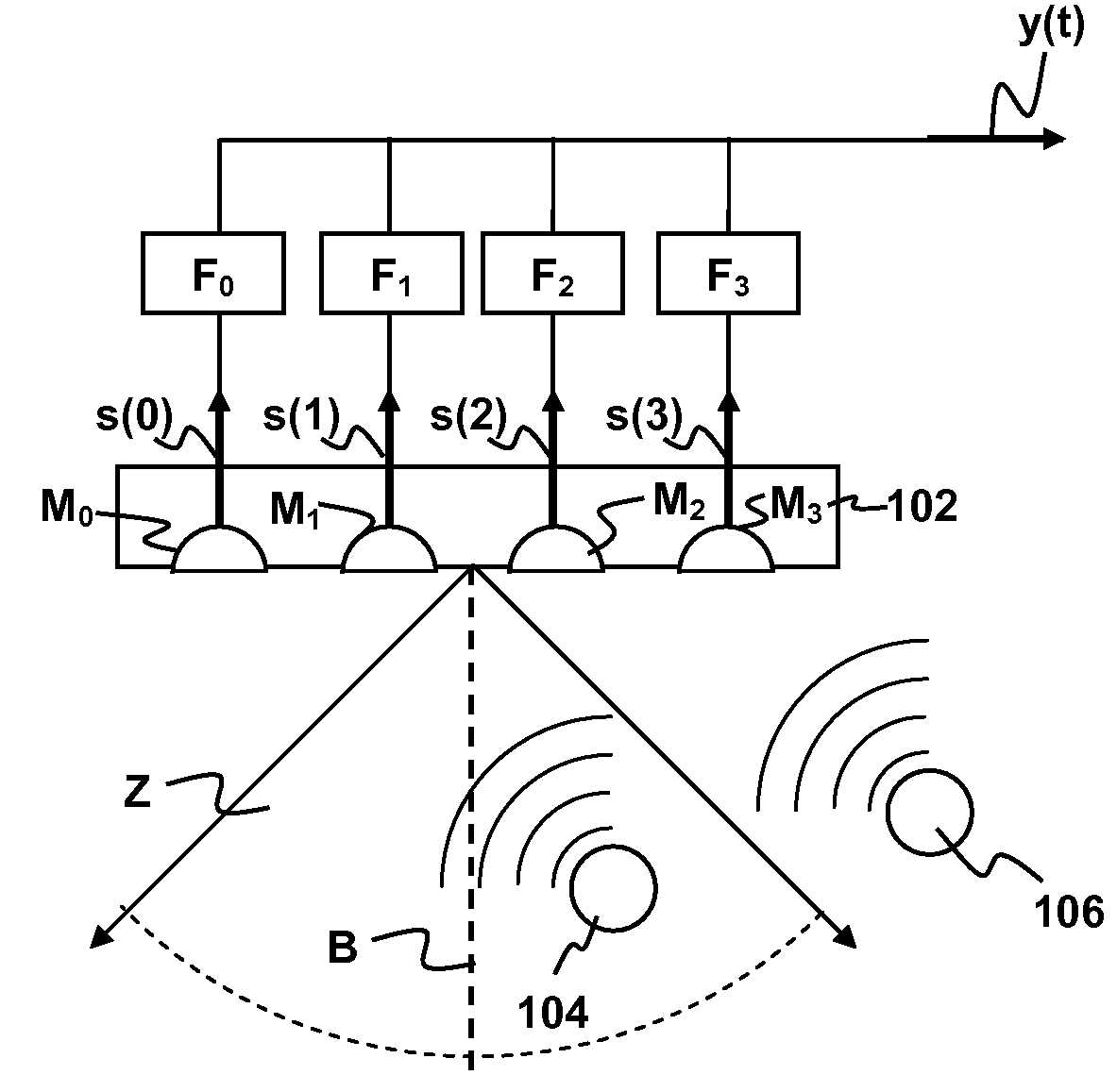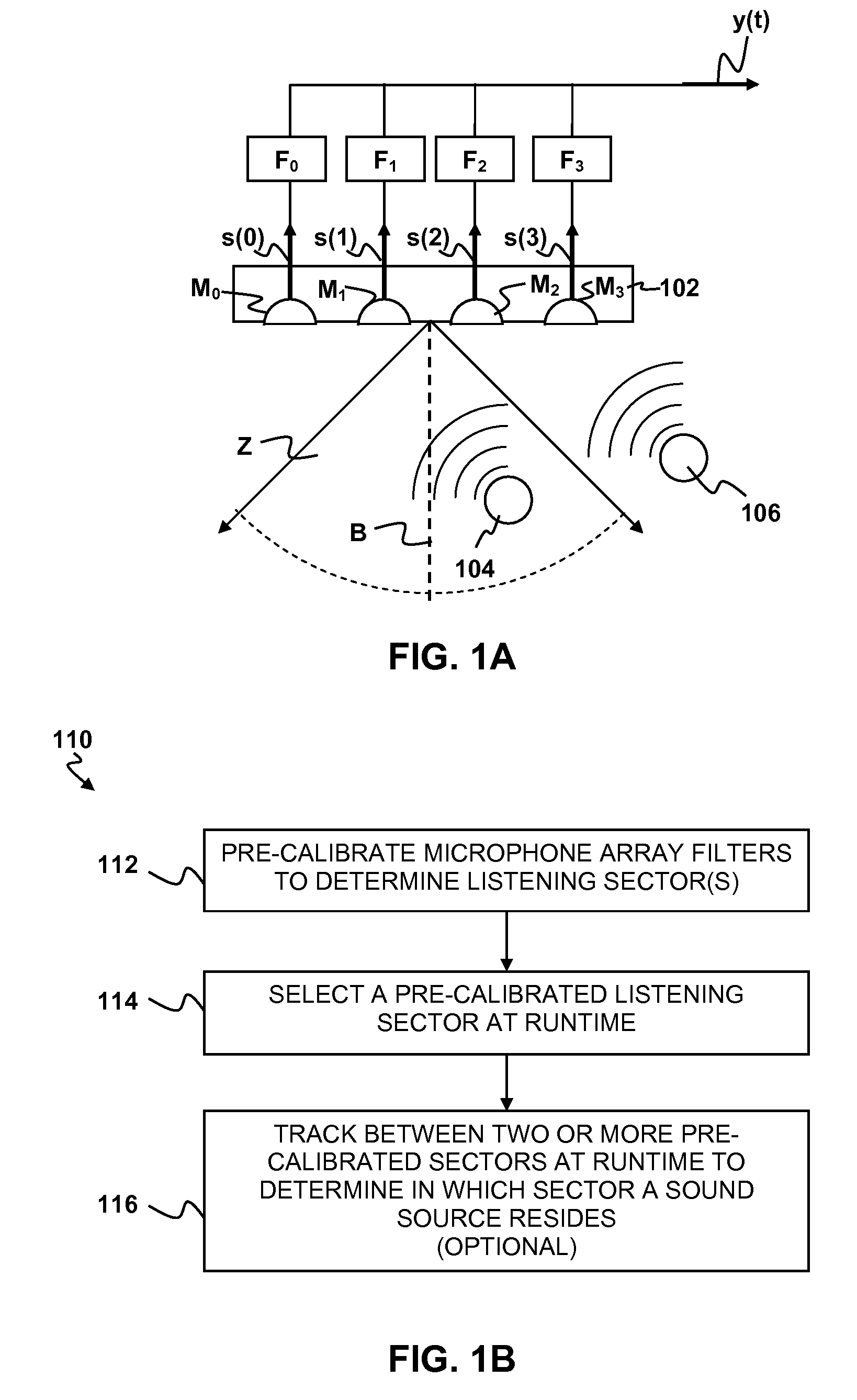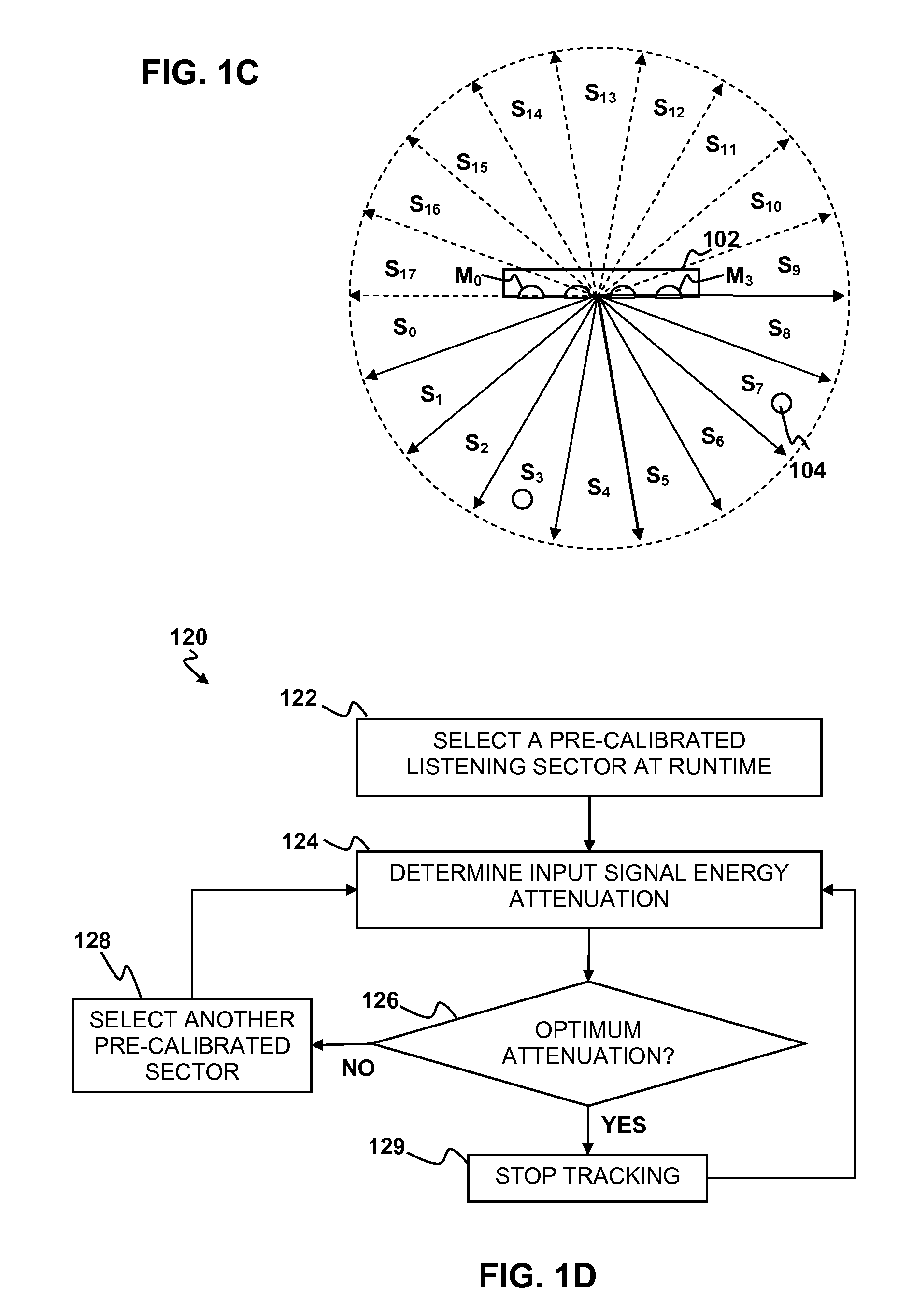Methods and apparatus for targeted sound detection and characterization
a targeted sound detection and characterization technology, applied in signal processing, transducer details, electrical transducers, etc., can solve the problems of inability to meet the needs of consumer electronics applications, directional microphones are unsuitable for applications in consumer electronics, and the technique is computationally intensive and not robus
- Summary
- Abstract
- Description
- Claims
- Application Information
AI Technical Summary
Benefits of technology
Problems solved by technology
Method used
Image
Examples
Embodiment Construction
[0022] Although the following detailed description contains many specific details for the purposes of illustration, anyone of ordinary skill in the art will appreciate that many variations and alterations to the following details are within the scope of the invention. Accordingly, the exemplary embodiments of the invention described below are set forth without any loss of generality to, and without imposing limitations upon, the claimed invention.
[0023] As depicted in FIG. 1A, a microphone array 102 may include four microphones M0, M1, M2, and M3 that are coupled to corresponding signal filters F0, F1, F2 and F3. Each of the filters may implement some combination of finite impulse response (FIR) filtering and time delay of arrival (TDA) filtering. In general, the microphones M0, M1, M2, and M3 may be omni-directional microphones, i.e., microphones that can detect sound from essentially any direction. Omni-directional microphones are generally simpler in construction and less expens...
PUM
 Login to View More
Login to View More Abstract
Description
Claims
Application Information
 Login to View More
Login to View More - R&D
- Intellectual Property
- Life Sciences
- Materials
- Tech Scout
- Unparalleled Data Quality
- Higher Quality Content
- 60% Fewer Hallucinations
Browse by: Latest US Patents, China's latest patents, Technical Efficacy Thesaurus, Application Domain, Technology Topic, Popular Technical Reports.
© 2025 PatSnap. All rights reserved.Legal|Privacy policy|Modern Slavery Act Transparency Statement|Sitemap|About US| Contact US: help@patsnap.com



